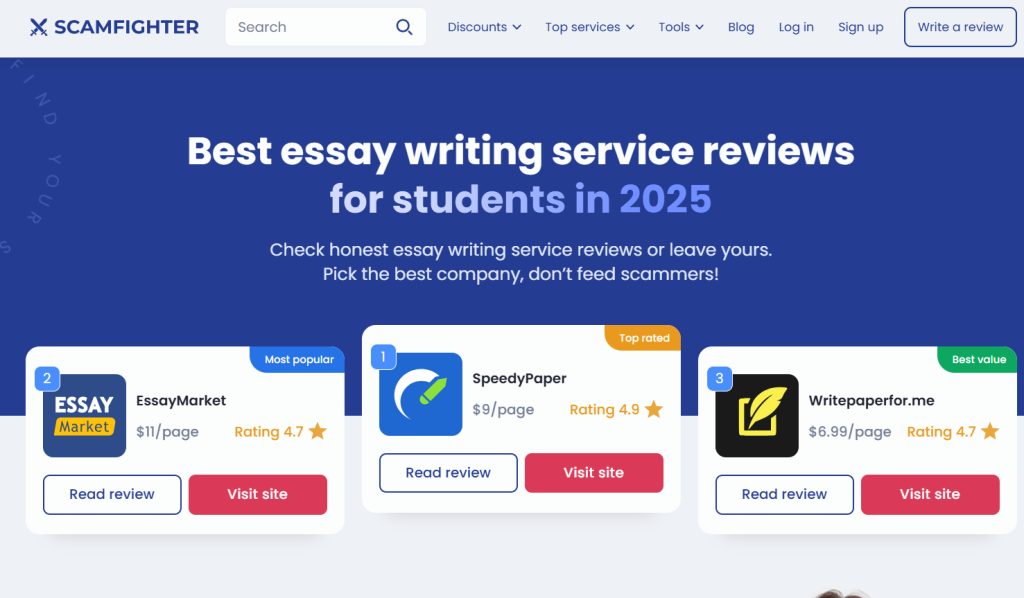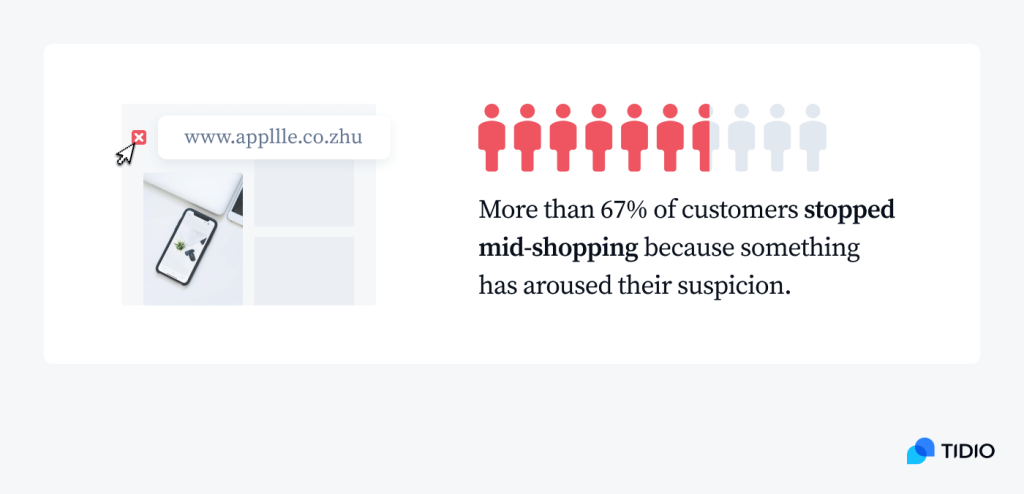
The Biggest Mistakes Businesses Make With Their Websites (Plus Practical Fixes)
A business website often makes a customer’s first impression, yet many companies make avoidable mistakes. Poor navigation, outdated design, or weak security can frustrate users and harm credibility.
This article highlights common website errors and provides insights to help businesses improve functionality, user experience, and overall effectiveness.
Outdated Design and Content
If your website looks old or unattractive, it can lead people to question your brand’s professionalism. A fresh, modern design helps build trust and keeps visitors engaged. Updating your content regularly is just as important – when your site feels current, users are more likely to stick around.
A recent survey by Goodfirms of over 200 web design agencies and freelance designers highlighted outdated design and poorly organized content as significant reasons visitors leave websites, cited by 38.5% and 34.6% of respondents, respectively. These issues not only make a site appear unprofessional but also hinder user engagement.

Source: GoodFirms
Additionally, don’t underestimate the power of images and videos. They grab attention, make your message clearer, and keep visitors interested. A website without enough visuals can feel flat and harder to navigate, so use them strategically to improve the user experience.
Practical Recommendations To Avoid Outdated Design and Content
- Refresh your homepage with seasonal promotions or new announcements every month to keep visitors informed and engaged.
- Replace old images and graphics with high-quality, relevant visuals to make your site feel more dynamic.
- Add videos that explain your products or services to offer visitors a more engaging way to learn about your brand.
- Publish a blog post each month covering relevant industry trends, answers to common customer questions, or practical tips to build a connection with your audience.
SEO Mistakes
Skipping on-page SEO—like using relevant keywords, clear metadata, and descriptive alt text for images—makes it harder for search engines to understand your content.
Conversely, overloading your pages with keywords can lead to penalties, hurting your rankings instead of improving them. Ignoring local SEO is another big miss, especially for businesses that rely on nearby customers.
Adding location-specific keywords, updating your Google Business profile, and encouraging local reviews can make a huge difference.
Practical SEO Recommendations
- Write clear and concise meta titles and descriptions for every page to help search engines and users understand your content.
- Use tools like Google Keyword Planner to find relevant keywords and include them naturally in your headings and text.
- Add descriptive alt text to images, explaining what they show to improve accessibility and search engine visibility.
- Avoid stuffing keywords into your content; focus on creating helpful, well-written pages that provide value to readers.
- Claim and update your Google Business profile with accurate details to boost local visibility.
- Consider hiring professionals, like Redhead Digital Agency, to help you implement SEO strategies for your business, including crowd marketing, guest posting, and SEO texts for any topic.
- Encourage satisfied customers to leave reviews online, which can improve trust and attract more local visitors.
- Use Chrome extensions like Ahrefs, SEOquake for quick analysis, or Grammarly for error-free content writing. If Google Chrome is using too many system resources, check Google Chrome Helper on Mac or use Chrome’s Task Manager on Windows to identify resource-heavy tabs or extensions.
Overlooking Security Measures
Failing to implement proper security measures can significantly harm your website’s reputation and functionality. Not having an SSL certificate, for example, undermines user trust as visitors may encounter warnings about an unsecured site.
Additionally, search engines prioritize secure websites, so lacking SSL can negatively impact your SEO rankings. Weak security protocols also leave your site vulnerable to hacks, jeopardizing your business and user data.
In 2024, vulnerabilities and cyberattacks, such as DDoS attacks (up by 41%), have surged dramatically, emphasizing the importance of robust security practices. With cybercrime expected to cost $23.84 trillion globally by 2027, securing your site is crucial to safeguard trust and minimize risks.
Practical Security Recommendation
- Install an SSL certificate to secure your site and improve trust with visitors.
- Regularly update your website’s software, plugins, and security patches to protect against vulnerabilities.
- Use strong, unique passwords for all accounts and enable two-factor authentication where possible.
- Monitor your website for unusual activity using tools like Wordfence or Sucuri, which offer real-time threat detection.
- Backup your website data regularly to guarantee quick recovery in case of an attack.
- Limit access to sensitive information, set permissions and restrict login attempts to mitigate risks.
Lack of Clear Goals or Calls to Action (CTAs)
Weak or missing CTAs, such as vague buttons or no direction at all, prevent users from taking the next step. Clear, compelling CTAs and a focused website purpose help drive conversions and achieve business objectives.
Recommendations for Clear Goals and Effective CTAs
- Define the main goal of your website, whether it’s to drive sales, capture leads, or provide information, and make sure every page supports that goal.
- Place clear, simple CTAs on every page to guide users toward the next step, like “Sign Up for Free” or “Visit Website”. For example, Scamfighter, an essay writing service review site, uses buttons like ‘Read review’ and ‘Visit site’ prominently on their homepage to guide visitors toward the next step instantly.

CTAs on Scamfighter’s homepage
- Use action-oriented language in your CTAs to create a sense of urgency, like “Get Started Today” or “Claim Your Offer.”
- CTAs must stand out visually on the page. Use contrasting colors or prominent buttons to make them easy to spot.
- Test different CTA placements and copy to see what gets the best response from your visitors.
- Regularly review your website’s content to make sure everything aligns with your business goals and guides users toward taking action.
Ignoring Analytics and User Feedback
Setting up analytics on your website provides insights into user behavior, such as which pages they visit, where they drop off, and what leads to conversions. Without this information, it’s hard to make informed decisions.
Similarly, disregarding user feedback—whether through surveys, reviews, or comments—can prevent you from addressing issues and improving your site. Paying attention to both analytics and feedback helps guide necessary changes and improve the overall user experience.
Practical Recommendations for Improving Analytics and User Feedback
- Track key metrics like user behavior, traffic sources, and conversions. For example, Lider used Google Analytics to align web and app data, reducing CPA by 85% and boosting conversion rates by 18X.
- Regularly check user reviews and comments to spot recurring issues or suggestions for improvement.
- Create simple surveys to ask visitors about their experience and gather specific feedback.
- Monitor your website’s performance regularly to identify areas for improvement based on user behavior.
- Act on the feedback you receive and test the changes to see how they impact engagement.
Neglecting Trust and Credibility
Trust is the foundation of any successful business website. Without visible reviews, testimonials, or other trust signals, visitors may hesitate to engage with your services. Issues like unclear policies, missing contact details, or insecure payment options can further raise doubts about your credibility.
According to a Tidio survey of 1,198 online shoppers, over 67% have abandoned purchases due to trust issues.

Source: Tidio
Transparency and addressing user concerns are key to building confidence and retaining customers. Establishing transparency and addressing user concerns are essential steps to gaining your audience’s confidence.
Recommendations for Building Trust and Credibility
- Add a reviews section to your website and actively collect testimonials from happy customers.
- Provide detailed contact information, including a physical address, phone number, and email address, to assure visitors that your business is legitimate and accessible.
- Include a secure payment badge at checkout to reassure customers about the safety of their transactions.
- Write clear policies for returns, refunds, and privacy. Place these in an easy-to-find section so users feel informed about your business practices.
- Dedicate a page to frequently asked questions (FAQs) to address common concerns and reduce hesitation for potential customers.
- Regularly publish case studies or real-world examples of how your product or service has helped clients, making your value tangible and relatable.
Overloading the Website With Features
Adding too many plugins to your website can slow down its performance, causing longer load times and a poor user experience. Each plugin also increases the risk of security vulnerabilities, especially if they aren’t regularly updated.
Adding numerous plugins can slow down a website’s loading time. In 2023, Patchstack reported that 5,948 new vulnerabilities were identified in the WordPress ecosystem, marking a 24% increase from the previous year.
Notably, 97% of these vulnerabilities were attributed to plugins, highlighting their potential risks. It’s important to carefully choose only the essential plugins that improve functionality without compromising speed or safety. Regularly review and remove unnecessary plugins to keep your site running smoothly and securely.
Recommendations To Avoid Overloaded Websites
- Keep plugins to a minimum and only use those that are absolutely necessary for your site’s functionality.
- Regularly check for unused plugins and remove them to improve speed and reduce security vulnerabilities.
- Choose lightweight, well-maintained plugins to minimize the impact on site performance.
- Run speed tests on your site to identify any plugins slowing down load times.
- Implement a content delivery network (CDN) to help your site handle multiple plugins without compromising speed.
- Stay on top of plugin security, keep them updated and use only trusted sources.
Final Thoughts
Creating a website that stands out doesn’t have to be complicated. Address common issues and stay proactive with updates, build a site that’s user-friendly, secure, and engaging.
Remember, the online world evolves quickly, so staying adaptable and open to new strategies is key. Keep refining your site, test what works, and stay connected to your audience for ongoing success.
